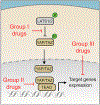The Hippo pathway: Horizons for innovative treatments of peripheral nerve diseases
- PMID: 33449435
- PMCID: PMC8455061
- DOI: 10.1111/jns.12431
The Hippo pathway: Horizons for innovative treatments of peripheral nerve diseases
Abstract
Initially identified in Drosophila, the Hippo signaling pathway regulates how cells respond to their environment by controlling proliferation, migration and differentiation. Many recent studies have focused on characterizing Hippo pathway function and regulation in mammalian cells. Here, we present a brief overview of the major components of the Hippo pathway, as well as their regulation and function. We comprehensively review the studies that have contributed to our understanding of the Hippo pathway in the function of the peripheral nervous system and in peripheral nerve diseases. Finally, we discuss innovative approaches that aim to modulate Hippo pathway components in diseases of the peripheral nervous system.
Keywords: Hippo; YAP/TAZ; nerve injury and regeneration; neurofibromatosis; peripheral neuropathy; schwann cell.
© 2021 Peripheral Nerve Society.
Figures



Similar articles
-
Hippo signaling pathway in companion animal diseases, an under investigated signaling cascade.Vet Q. 2021 Dec;41(1):172-180. doi: 10.1080/01652176.2021.1923085. Vet Q. 2021. PMID: 33945400 Free PMC article.
-
Reciprocal regulation of YAP/TAZ by the Hippo pathway and the Small GTPase pathway.Small GTPases. 2020 Jul;11(4):280-288. doi: 10.1080/21541248.2018.1435986. Epub 2018 Apr 20. Small GTPases. 2020. PMID: 29457552 Free PMC article. Review.
-
YAP/TAZ for cancer therapy: opportunities and challenges (review).Int J Oncol. 2015 Apr;46(4):1444-52. doi: 10.3892/ijo.2015.2877. Epub 2015 Feb 5. Int J Oncol. 2015. PMID: 25652178 Review.
-
Hippo signaling in regeneration and aging.Mech Ageing Dev. 2020 Jul;189:111280. doi: 10.1016/j.mad.2020.111280. Epub 2020 Jun 6. Mech Ageing Dev. 2020. PMID: 32512018
-
Mechanisms of Hippo pathway regulation.Genes Dev. 2016 Jan 1;30(1):1-17. doi: 10.1101/gad.274027.115. Genes Dev. 2016. PMID: 26728553 Free PMC article. Review.
Cited by
-
Piezo channels contribute to the regulation of myelination in Schwann cells.Glia. 2022 Dec;70(12):2276-2289. doi: 10.1002/glia.24251. Epub 2022 Jul 29. Glia. 2022. PMID: 35903933 Free PMC article.
-
The STRIPAK complex is required for radial sorting and laminin receptor expression in Schwann cells.Cell Rep. 2025 Mar 25;44(3):115401. doi: 10.1016/j.celrep.2025.115401. Epub 2025 Mar 6. Cell Rep. 2025. PMID: 40056414 Free PMC article.
-
Wrestling and Wrapping: A Perspective on SUMO Proteins in Schwann Cells.Biomolecules. 2021 Jul 19;11(7):1055. doi: 10.3390/biom11071055. Biomolecules. 2021. PMID: 34356679 Free PMC article. Review.
-
YAP and TAZ regulate remyelination in the central nervous system.Glia. 2024 Jan;72(1):156-166. doi: 10.1002/glia.24467. Epub 2023 Sep 19. Glia. 2024. PMID: 37724047 Free PMC article.
-
Myelin Biology.Neurotherapeutics. 2021 Oct;18(4):2169-2184. doi: 10.1007/s13311-021-01083-w. Epub 2021 Jul 9. Neurotherapeutics. 2021. PMID: 34244924 Free PMC article. Review.
References
-
- Harvey KF, Pfleger CM, Hariharan IK. The Drosophila Mst ortholog, hippo, restricts growth and cell proliferation and promotes apoptosis. Cell. 2003;114:457–467. - PubMed
-
- Pantalacci S, Tapon N, Leopold P. The Salvador partner hippo promotes apoptosis and cell-cycle exit in Drosophila. Nat Cell Biol. 2003;5:921–927. - PubMed
-
- Udan RS, Kango-Singh M, Nolo R, Tao C, Halder G. Hippo promotes proliferation arrest and apoptosis in the Salvador/warts pathway. Nat Cell Biol. 2003;5:914–920. - PubMed
-
- Wu S, Huang J, Dong J, Pan D. Hippo encodes a Ste-20 family protein kinase that restricts cell proliferation and promotes apoptosis in conjunction with Salvador and warts. Cell. 2003;114:445–456. - PubMed
Publication types
MeSH terms
Substances
Grants and funding
LinkOut - more resources
Full Text Sources
Other Literature Sources
Medical
Research Materials

